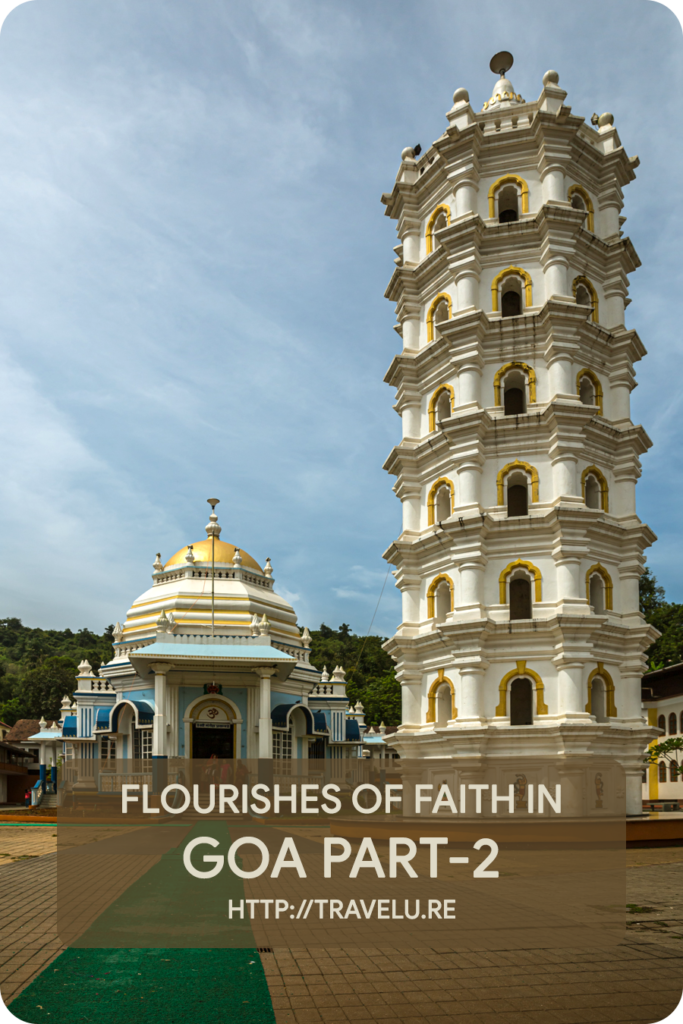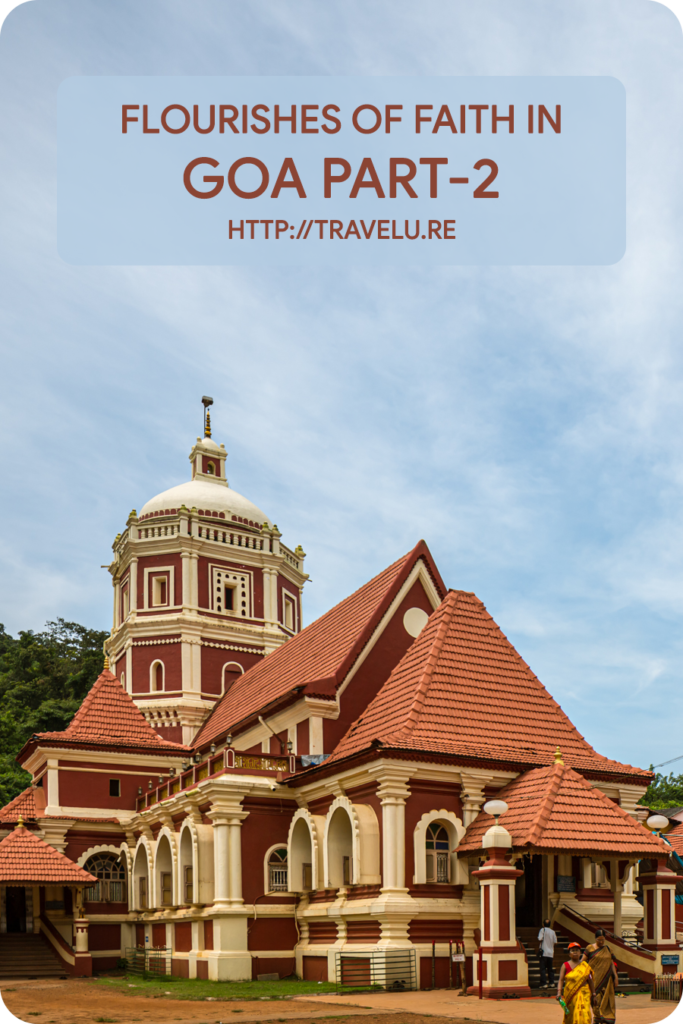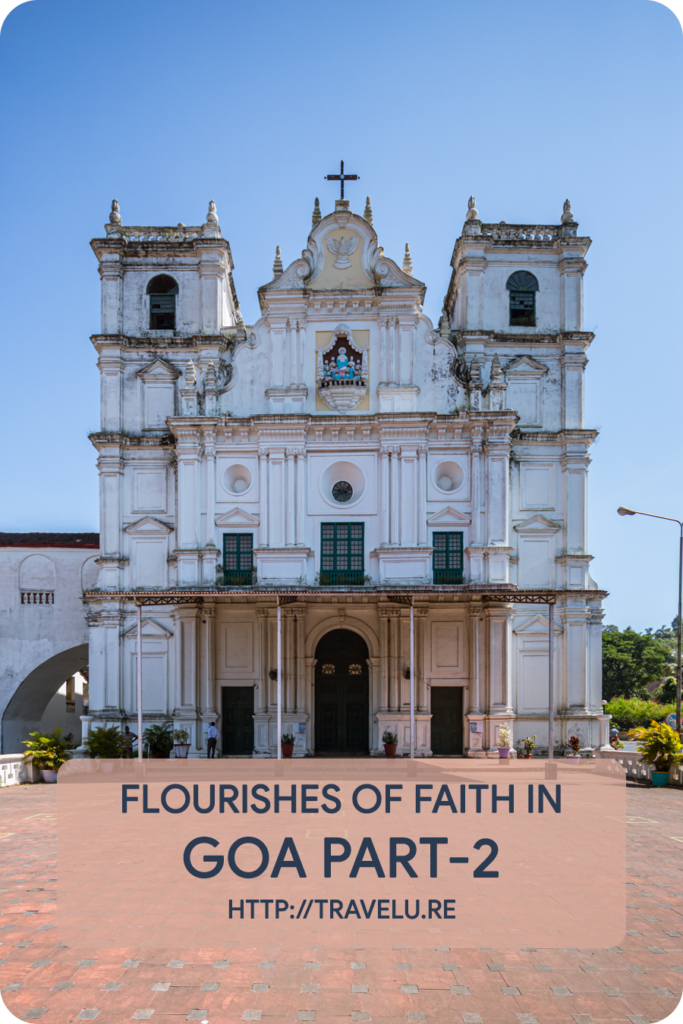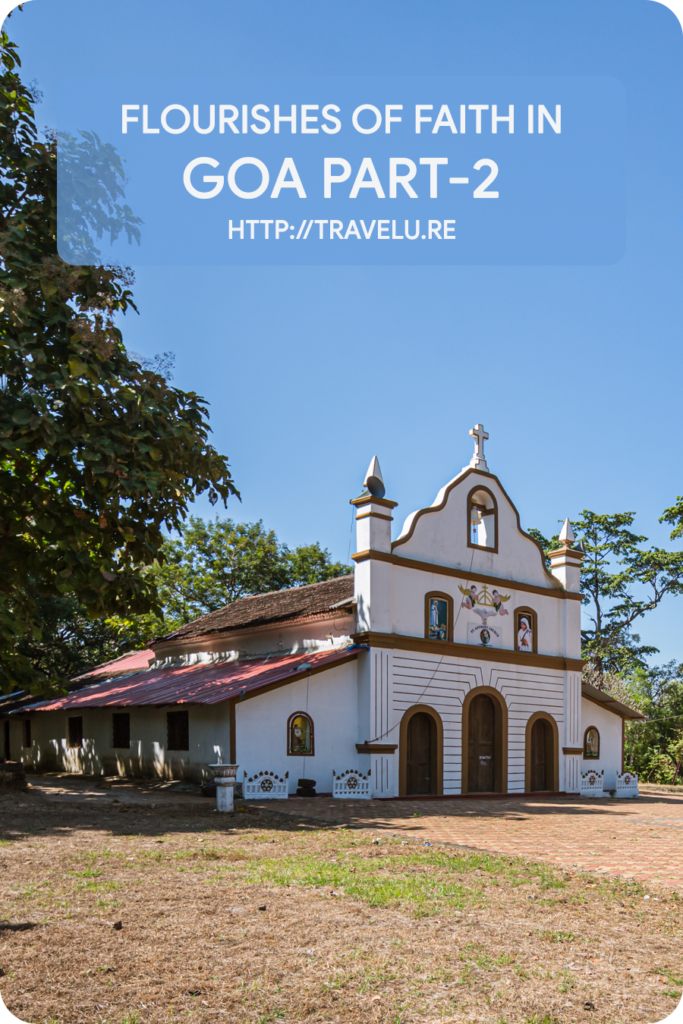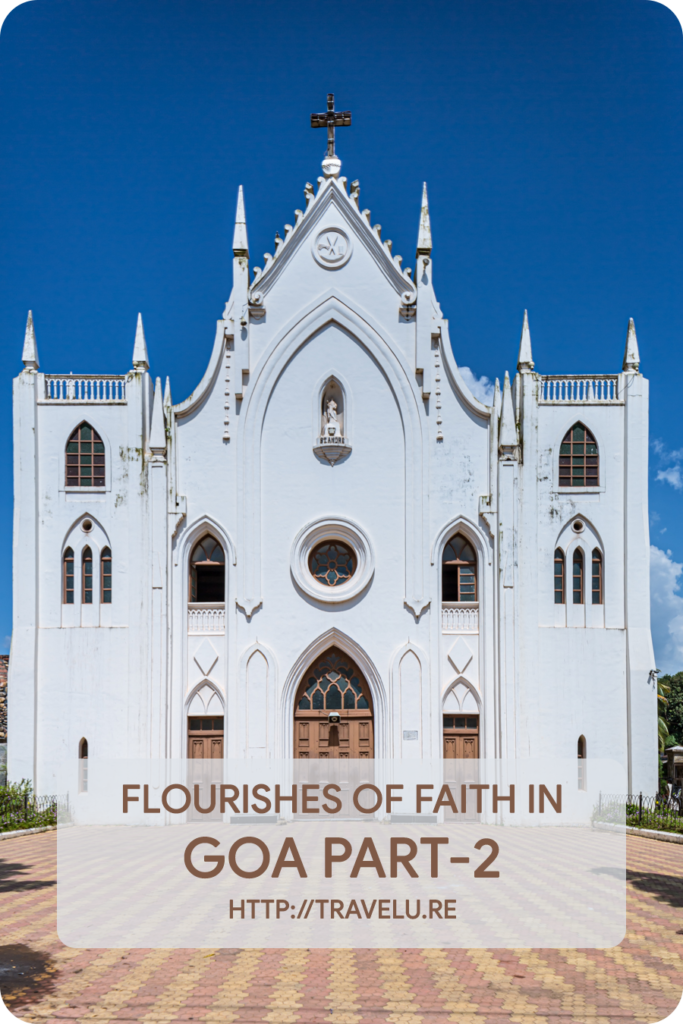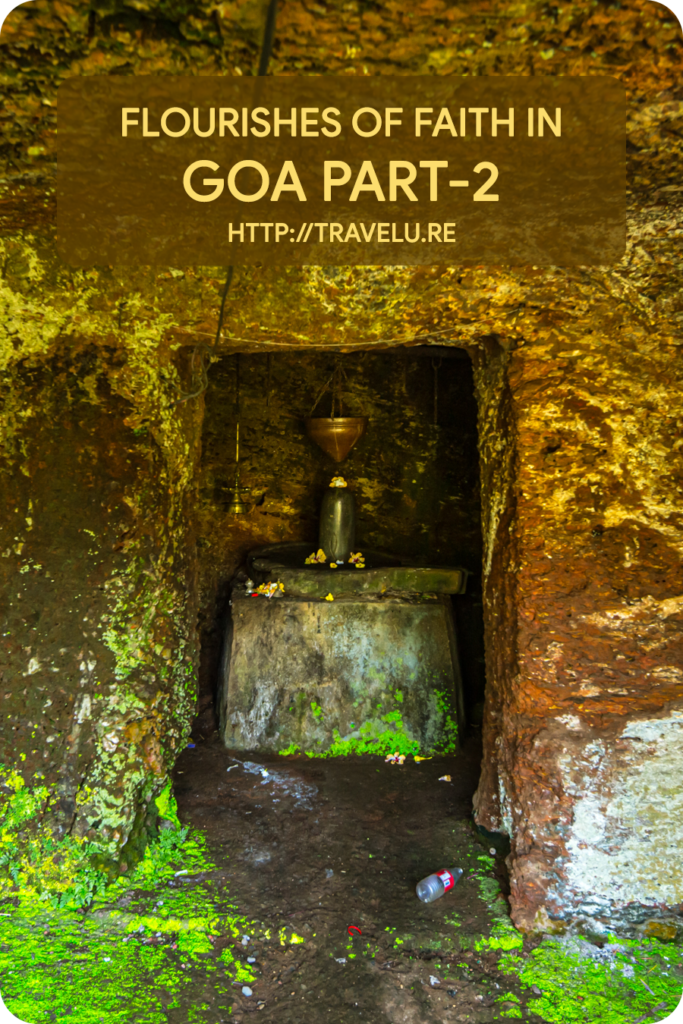Flourishes of Faith in Goa Part-2
We travelled north, northeast and east of Panjim last week. Amongst others, that itinerary took us through the UNESCO-listed world heritage sites like the Se Cathedral and the Basilica of Bom Jesus. This week, let us travel southeast and south of Panjim. You may also use this journey through some iconic edifices of faith in Goa as an itinerary.
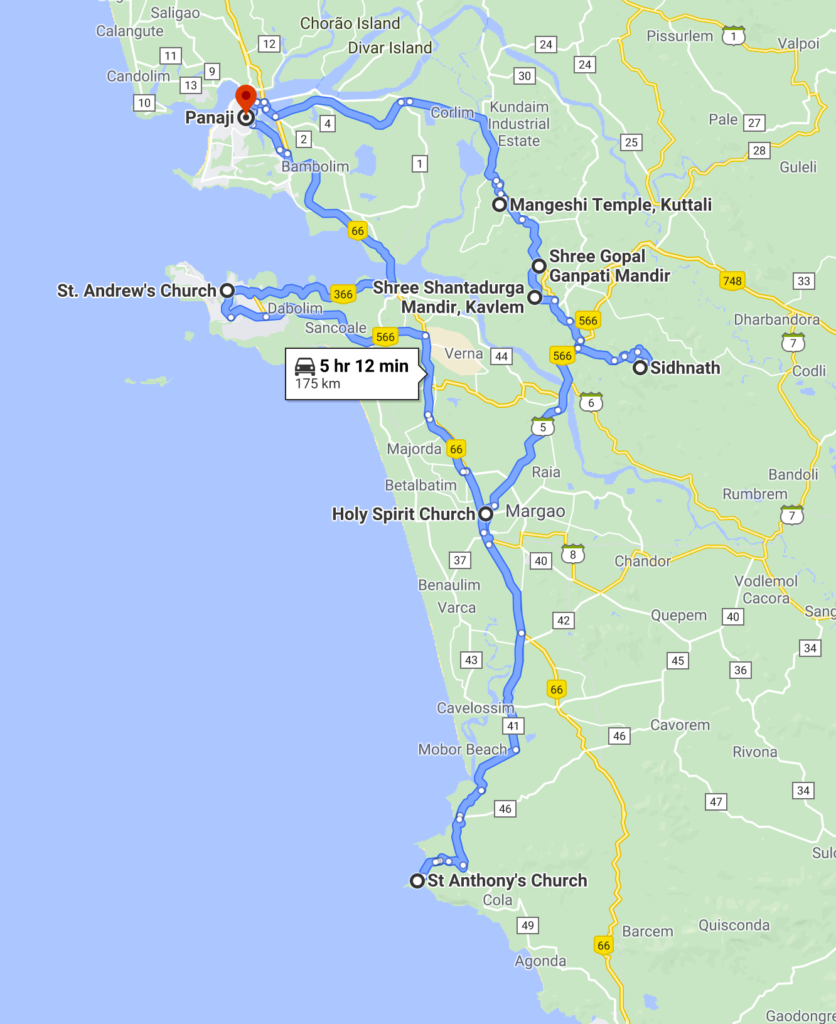
Heading Southeast
As we make our way past Corlim and Kundaim Industrial Estate to Old Goa, Mangeshi Temple is our first stop. When the Portuguese started converting the locals to Christianity, the local Saraswat brahmins moved the Mangesh Linga from Cortalim to Priol in Ponda in 1560 CE as a Hindu King then ruled the village. In a recent renovation, the devotees installed a golden kalash (urn) on Mangeshi Temple’s tallest dome. Its deep stambh (lamp pillar) is a striking structure.
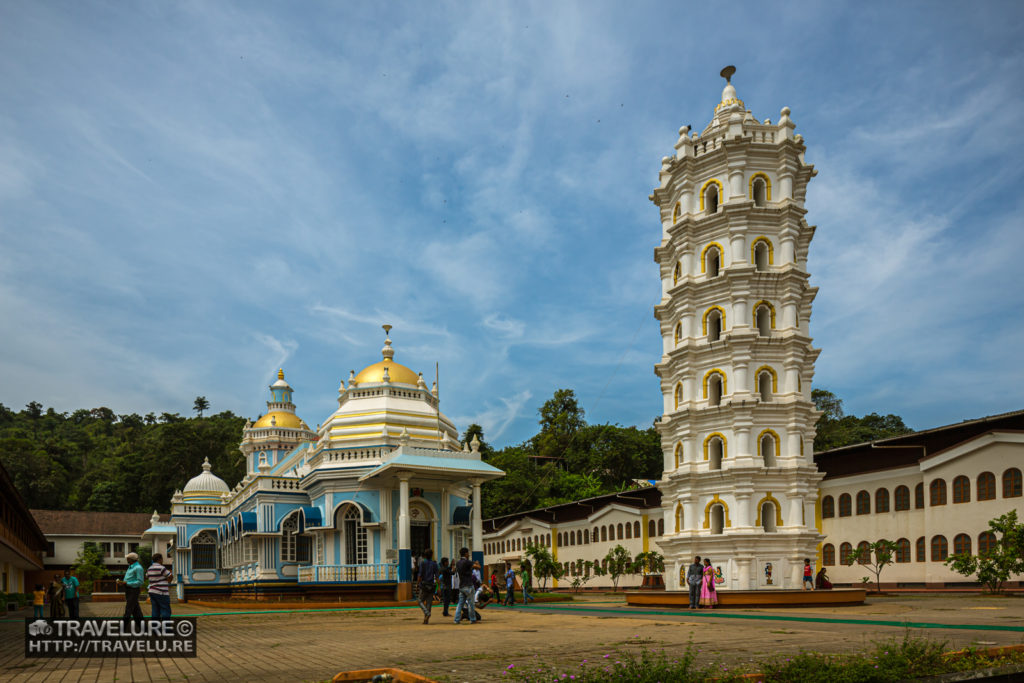
Not too far from Mangeshi Temple is Shri Gopal Ganpati Devasthan. A shepherd called Hapo found a 1-foot statue of Lord Ganesha about a century ago. He consecrated it in a small mandapa (pavilion) made of coconut branches. This temple came up at that location.
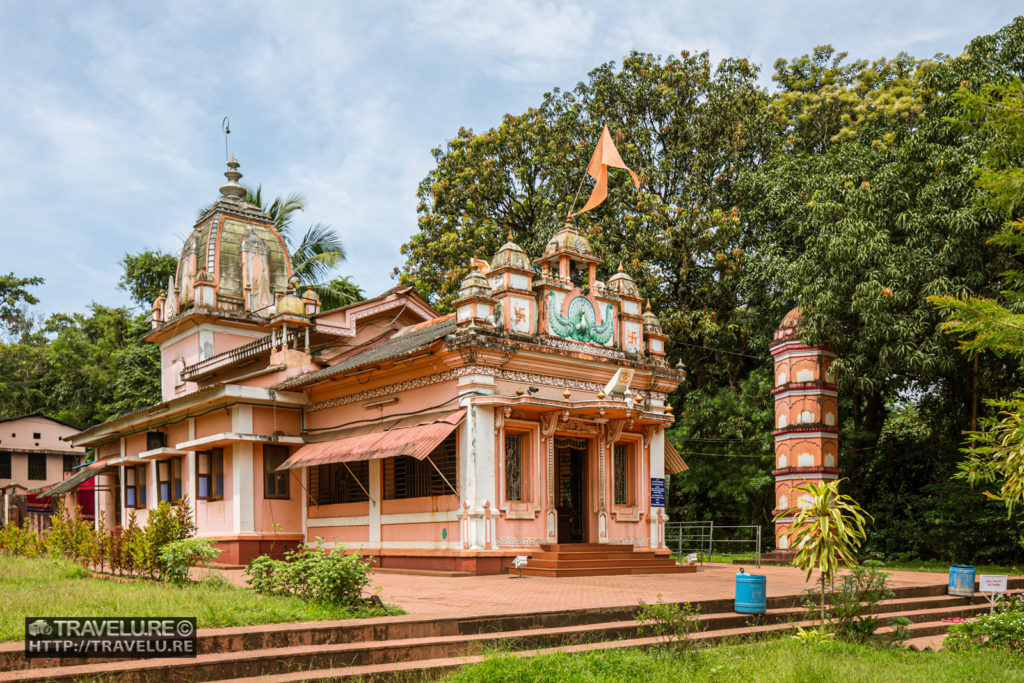
The next attraction, Shantadurga Temple, is just 2.5 km south of Shri Gopal Ganpati Devasthan and is in Kavalem village in Ponda. Built between 1713 and 1738 CE, the structure sports pyramidal roofs and a couple of domes. This temple too has an imposing deep stambh (lamp pillar) in its precincts.
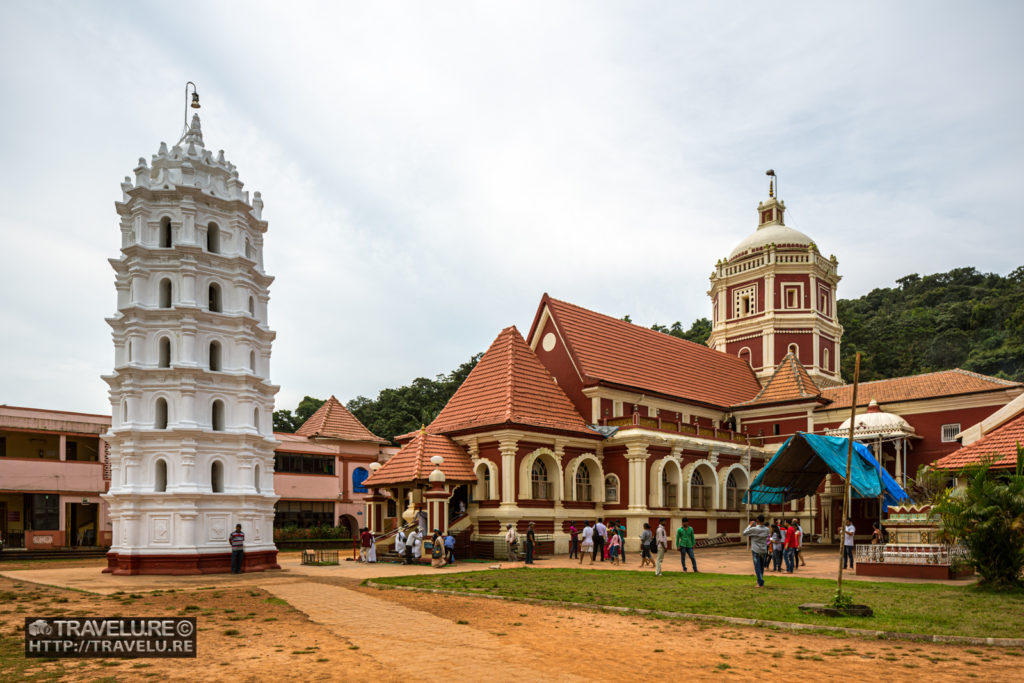
11.5 km further south from Shantadurga Temple, Siddhanath Cave Temple is from the early medieval period. This laterite cave comprises a simple rectangular cell that has a Linga. Two pillars and pilasters support the cave. The open courtyard in front is carved out of the same rock surface and it reflects the developed architectural style in the rock cut architecture of Goa during those times.
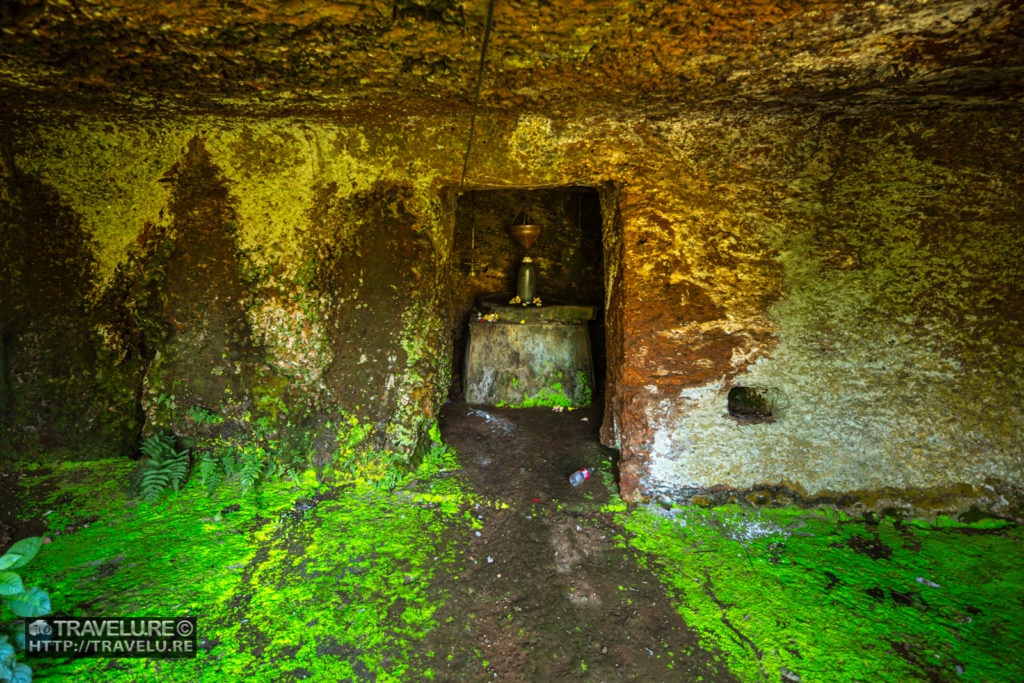
To Margao and Beyond
From Siddhanath, we head southwest towards Margao. As we make our way through the city, a Margao landmark dominates our view – the Holy Spirit Church. We may call this church a phoenix for it rose from its ashes 5 times. First built in 1564, the structure we see today is its fifth avatar that came about in 1675. Locals also call it the Margao church. Close by, you can find many suitable places to grab some lunch. Do that, as the rest of the journey will be through the hinterland of Goa.
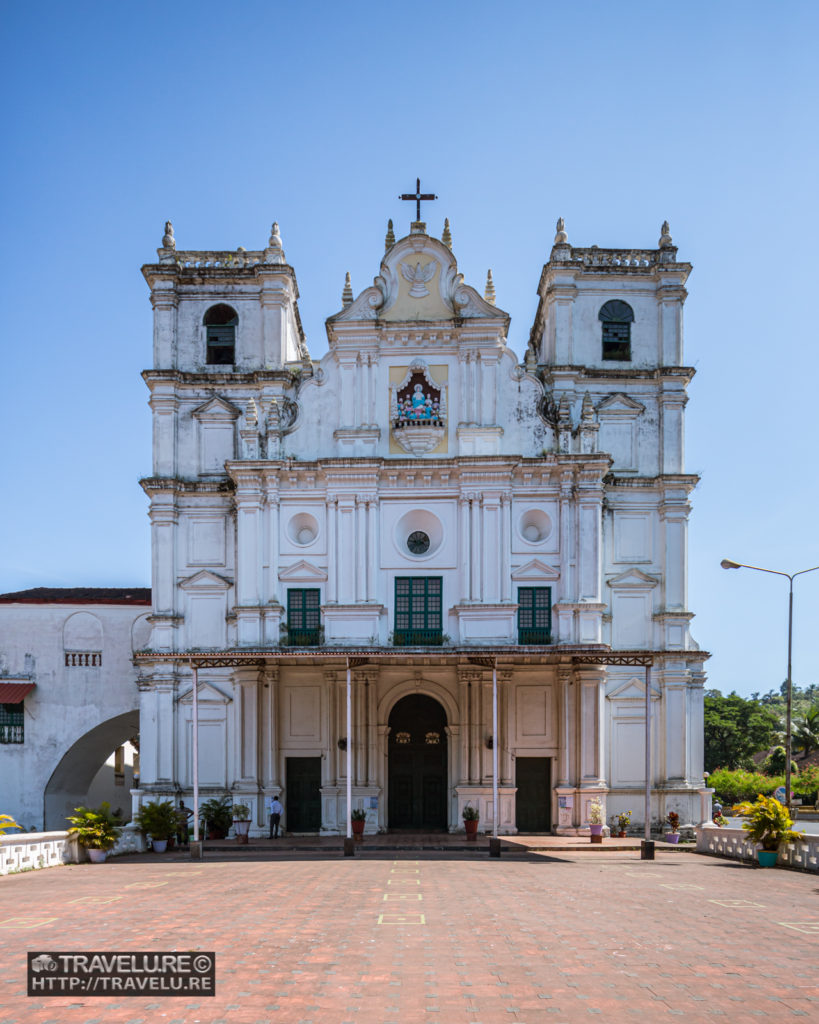
Cabo de Rama, a fort the Portuguese took because they liked the view, is a 30-km drive from Margao. Many structures dot the grounds inside this impressive fort. One of them is St Anthony’s Church. Locals know this as the Cabo de Rama Church. The Portuguese built it after they captured Cabo de Rama Fort in 1591 CE. The serene surroundings of the church will tempt you to spend some down time here. Do that, as you take in the view of the large cape and the Arabian Sea from the viewpoints along the fort wall.
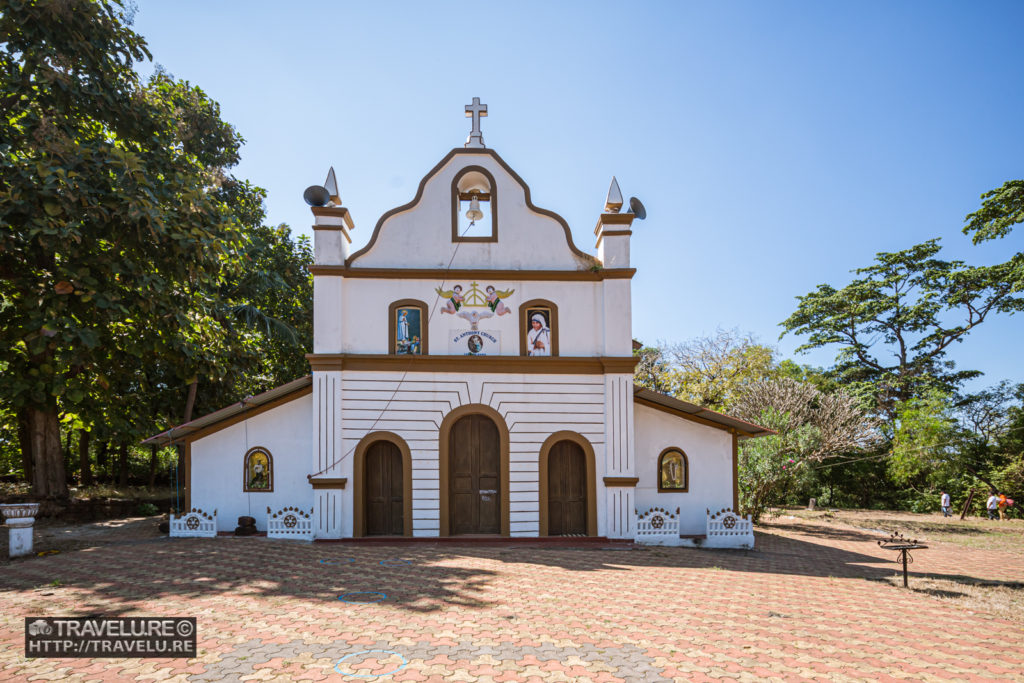
Vasco da Gama
After this stop, it is time to head back North. But instead of Panjim, we will swing by Vasco da Gama, Goa’s port city. In Vasco, St Andrews Church is a prominent landmark. Jesuits founded it in 1570 CE, but multiple renovations thanks to demolition by aggressors and elements account for its current neo-gothic looks. Its pristine white edifice will remind you of a masterpiece wedding cake with white icing, crafted by a Michelin-star pastry chef.
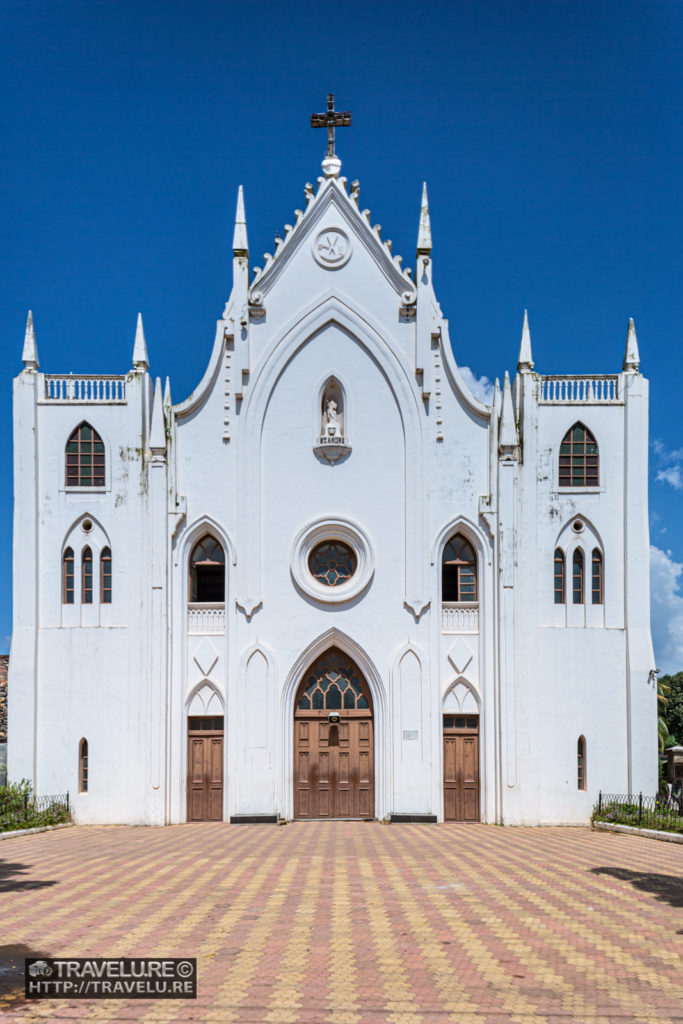
As you head back to Panjim, you will look back at these itineraries of heritage and faith and wonder what made you give them a miss earlier. While the beaches in Goa are fun, these itineraries are enriching.

